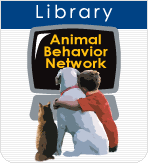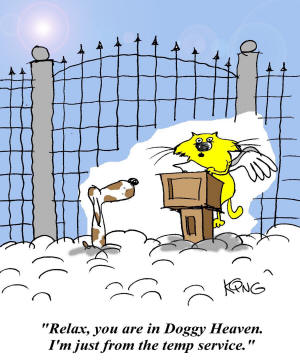|
Getting Started Week 45 - Classifying Canine
Fearfulness
.jpg) Anxiety
can be considered a mild form of fear. In people, fear is described and
a concern
about an imminent danger. Anxiety
can be considered a mild form of fear. In people, fear is described and
a concern
about an imminent danger.
Pets show fear in their body postures and expressions. Fear may look
like: cowering, hiding,
dilated pupils, drooling, withdrawal, and trembling.
Sources of anxiety:
social isolation or separation, food, lack of enough exercise, lack of
clear leadership,
noise, social, neophobic (fear of anything new).
Anxiety influencers 1) genetic predisposition, 2) lack of proper
socialization during the pets critical learning period in the first few
months of life, and 3) the type and impact of environmental experiences.
No
one knows if pets experience traumatic stress syndrome but we do know
they remember traumatic events. The canine brain functions much like the
human brain. For example, as one part of a comprehensive behavioral
treatment and modification play, dogs may be put on Prozac by the
attending veterinarian or veterinary behaviorist.
Behavioral treatment plans are based on an extensive analysis of the
pet's behavioral history.
Parenting Tips™ for your puppy
|
Error Free Puppy Raising™
- Click on Library Icon below to learn more:

Use Library
Icon
to
go to Library
|
 |
|